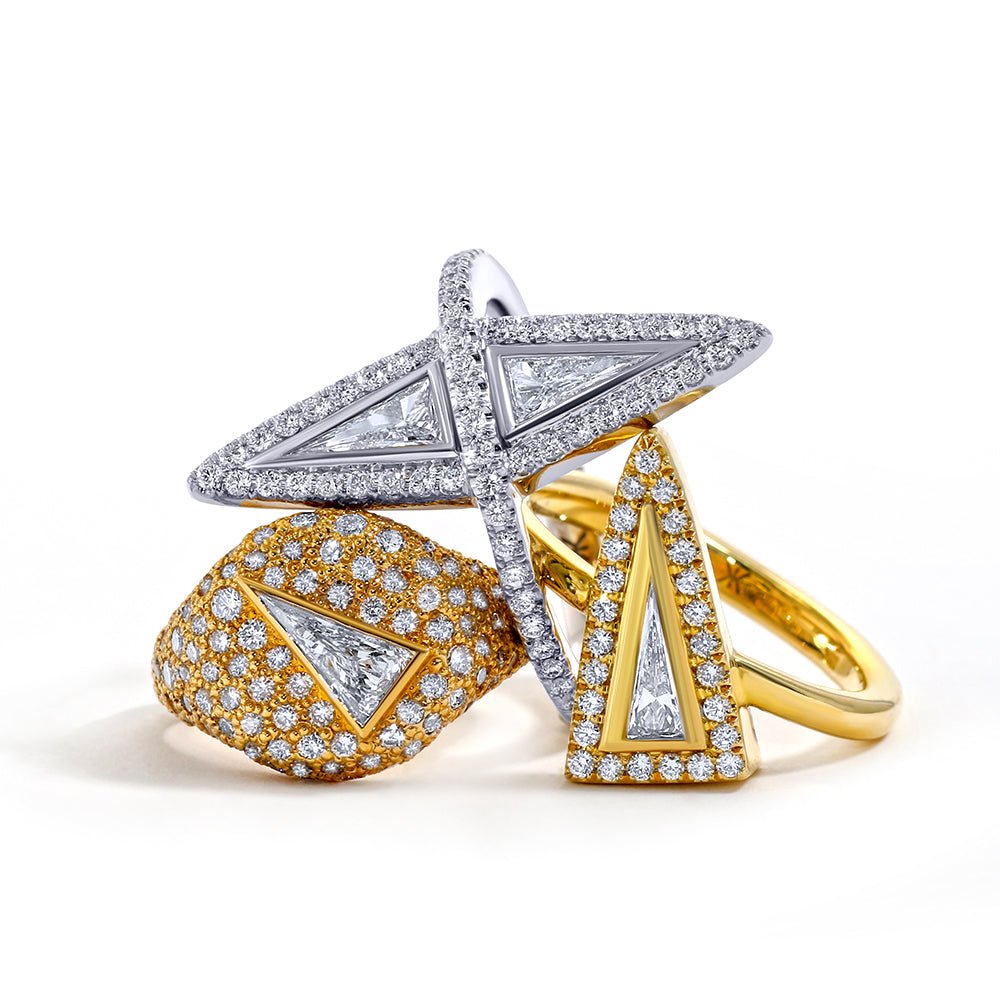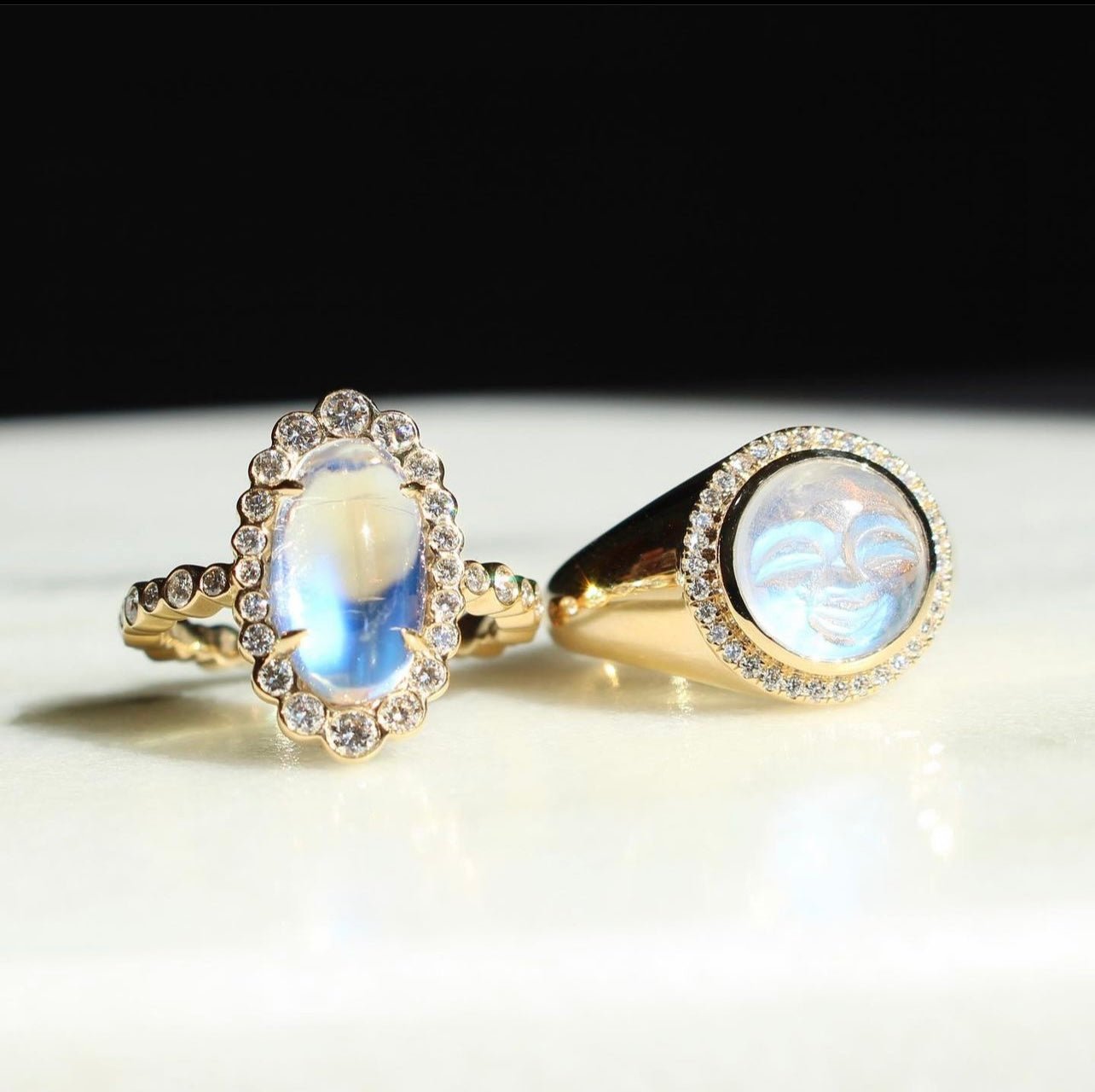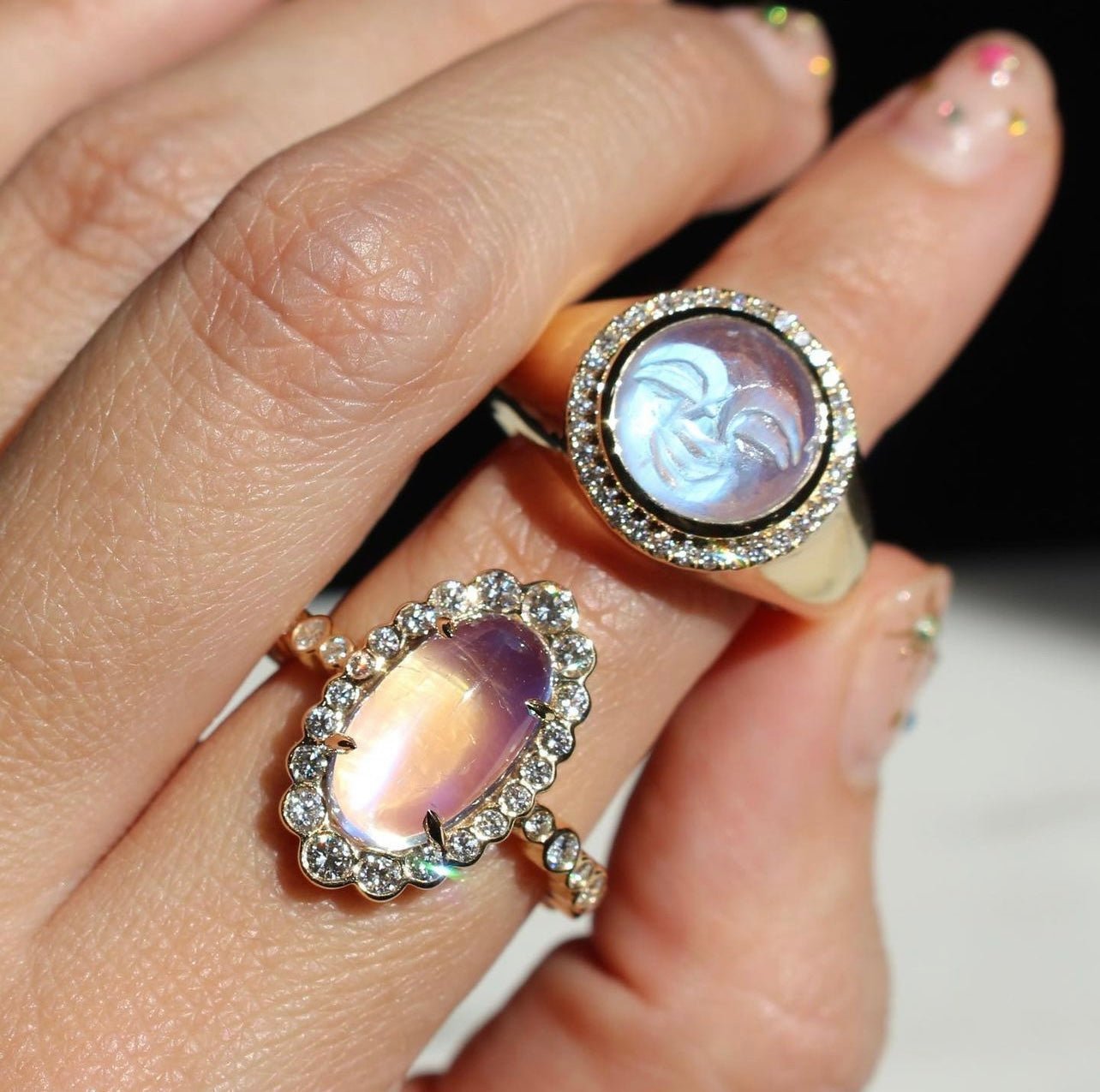There is nothing as classy and timeless as a natural diamond. Whether you have a long-cherished set of diamond emerald cut earrings from a grandmother, or you find yourself staring at your diamond marquise engagement ring years after you married, this gem is made to be passed down and admired for decades to come.
What makes diamonds so special is their unique ability to be instantly recognizable. No matter the diamond shape, the stone is unquestionably special.
Despite the effortless beauty, getting a diamond from the ground to your retailer to your jewelry box is a complex and highly-detailed process.
There are many ways to define a “flawless” diamond or one that is up to gemologist standards. It is our hope here at Mark Henry Jewelry that we can inform you about how to spot lower clarity diamonds so that your next purchase includes a checklist of exactly what to look for.
Characteristics
Before we jump into the world of diamond clarity, we first have to set some groundwork. This April birthstone is an incredibly durable and hard mineral, known as one of the hardest on the market.
They rank in as a 10 on the Mohs Scale of hardness. This means that they are incredibly wearable and positioned easily and safely in rings and bracelets.
Benefits
Diamonds have an isometric crystallography and an adamantine luster. This is the most lustrous category for all gems, and it simply shows just how reflective they can really be. As you know, the shine of diamonds is a part of their appeal. Diamonds can also be fluorescent, phosphorescent, and have UV-long and short luminescence.
In terms of fractures, you can find diamonds that splinter or have conchoidal splits. They tend to split evenly, making cleavages possible. This can be used to the advantage of a jeweler.
The jeweler can separate them into smaller pieces to be cut down for wear. It just means that a little additional caution should be used so that they aren’t chipped when put in rings or bracelets, despite their hardness.
Enhancements and Treatments
Because diamonds can be found in colors ranging from clear (due to their transparent nature) to yellow, green, black, and pink, it is common for irradiation to be used to bring out more trendy shades.
While this is not the typical version of diamonds that you see in stores, they definitely have a niche market. A beautiful blue or gray diamond engagement ring is quite a unique statement.
Also, lasers can be used to get rid of some inclusions. We will discuss those later, but these are the most important components to whether or not a diamond is clear (and rare). If there are cracks or fractures in a diamond, they can be corrected with glass filaments. Sometimes these surfaces are coated for a smooth appearance.
Inclusion Incidents
Diamonds are formed when carbon undergoes a process of heat and pressure. Since minerals grow surrounded by one another, it is not uncommon for a diamond to have a part of another crystal in it.
This creates a muddled look called, and the trait is known as an “inclusion.” It can lower the value and rarity because it is no longer seen as “eye-clean.”
Common Culprits: Eye-Visible Inclusions
If you see black inclusions in a diamond, these are most likely from graphite, pyrrhotite, pentlandite, and rutile.
In diamonds from Russia, you may find muddy red inclusions known as chrome spinel, whereas green inclusions are chrome diopside from South Africa. If your diamond is from India, you might see cloudy inclusions — these types of inclusions fog up the gem and make it less desirable.
One of the peskiest inclusions is olivine. It has a bubble-like formation inside the diamond and can even include clusters of crystals. These bubbles can be clear or green, which is distracting.
Clarity Rating Scale
To determine the clarity grade of a diamond, one must consult the universal GIA (Gemological Institute of America) Diamond Clarity Scale.
When creating a grading report, gemologists consider what inclusions and surface blemishes are in a diamond to find where it fits on the scale. An eye-clean, flawless diamond naturally has no blemishes and no inclusions.
Determining the Clarity of a Diamond
Apart from the set scale, you should always consider the size of the inclusions and blemishes and how many are in the diamond.
It is vital to consult a real gemologist to help you with the grading task to ensure perfection. Usually, magnification is needed, and only the kind that can be done in a gemological lab by a skilled grader. The unaided eye is not always capable of seeing diamond inclusion.
Categories and Clarity Characteristics
- Flawless (FL). These diamonds have absolutely no inclusions or blemishes when looked at under a magnification of 10x — this means the inclusions and blemishes don’t exist to the naked eye, nor to gemologist inspection. This is the most desirable grade on the scale.
- The second-best grade is Internally Flawless (IF), with no inclusions under a 10x magnification of 10x but some mildly noticeable blemishes.
- Very Very Slightly Included (VVS1, VVS2) is the middle of the scale. You can have some minute inclusions in these diamonds, but when you place the piece under a magnification of 10x, they can only mildly be noted. They are not visible to the naked eye.
- Very Slightly Included (VS1 and VS2 diamonds) is a step-down. The inclusions are more noticeable even under a magnification of 10x. These minor inclusions don’t necessarily ruin the appearance of the diamond, but the diamond can no longer be considered eye-clean.
- Slightly Included (SI1, SI2 clarity) means that when you use a magnification of 10x, these inclusions are easily viewable. They disrupt how the diamond looks and lower its purity and value.
- The lowest grade possible is Included (I1, I2, I3), where diamonds may appear more opaque or less brilliant because of how bad their inclusions are.
American Gem Society Scale
In addition to the GIA Clarity Scale, the American Gem Society is another reputable organization that has constructed its own way of determining the grade of a diamond. In their technique, the Flawless and Internally Flawless grades are combined (because they are so similar), but everything else is generally the same.
The main difference to their diamond clarity chart is that they add numbers to each ranking. A grade of AGS0 or AGS1 means a diamond is of better quality than AGS9 or AGS10.
A sliding scale can offer that extra boost of simplicity, rather than just referring to the diamonds with gemologist lingo like IF and Si.
Factors
The American Gem Society utilizes the same determining factors to make their diamond clarity grade as GIA. These include the size, nature, number, location, and relief of inclusions. It may not seem obvious to an outsider, but where an inclusion sits is critical.
For example, if it is placed in a location on the diamond that typically reflects light, it can substantially impact the gem's quality and dull its appearance.
A Cut Above the Rest
At Mark Henry, we are known for our passion for alexandrite, but we are also connoisseurs of diamond jewelry.
‘
We display this admiration in these pieces:
Our Airy Vine Ring is a perfect example of this. Luminescent, round diamonds meet arrow-cut diamonds for a complex, artistic piece. Made with 18kt gold and a total diamond weight of 0.60 ct, this ring is as luxurious as they come.
The Aureole Diamond Drop Earrings are a fan favorite, and these 0.41-carat white diamonds are not to be missed. Even the lever back is coated in stunning diamonds.
Lastly, our Daffodil Garden Dangling Hoop Diamond Earrings steal the show with .10ct of the ultra-rare gem alexandrite. This is complemented by 0.64cts of white diamonds in a floral motif for a sophisticated, artsy look.
A Higher Clarity and Higher Purpose
Here at Mark Henry Jewelry, you never have to worry about the purity or rarity of your diamond purchases. We use only eye-clean, naturally brilliant diamonds of the highest value. Consult one of our jewelry experts today for all of your diamond clarity questions and to find the next piece that brings a little sparkle to your life.
Sources:
What is Diamond Clarity: The 4 Cs| GIA
Diamond Clarity Scale | American Gem Society
Diamond Value, Price, and Jewelry Information | International Gem Society


